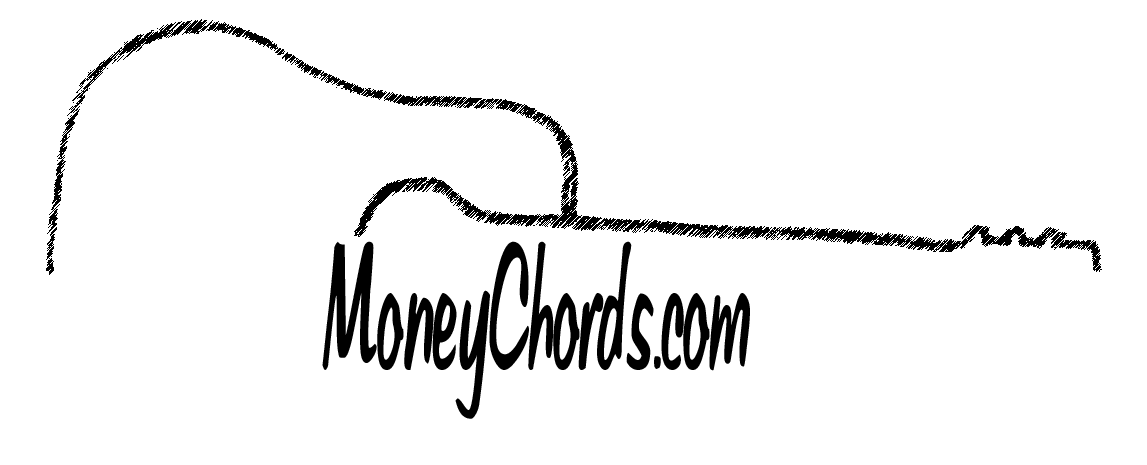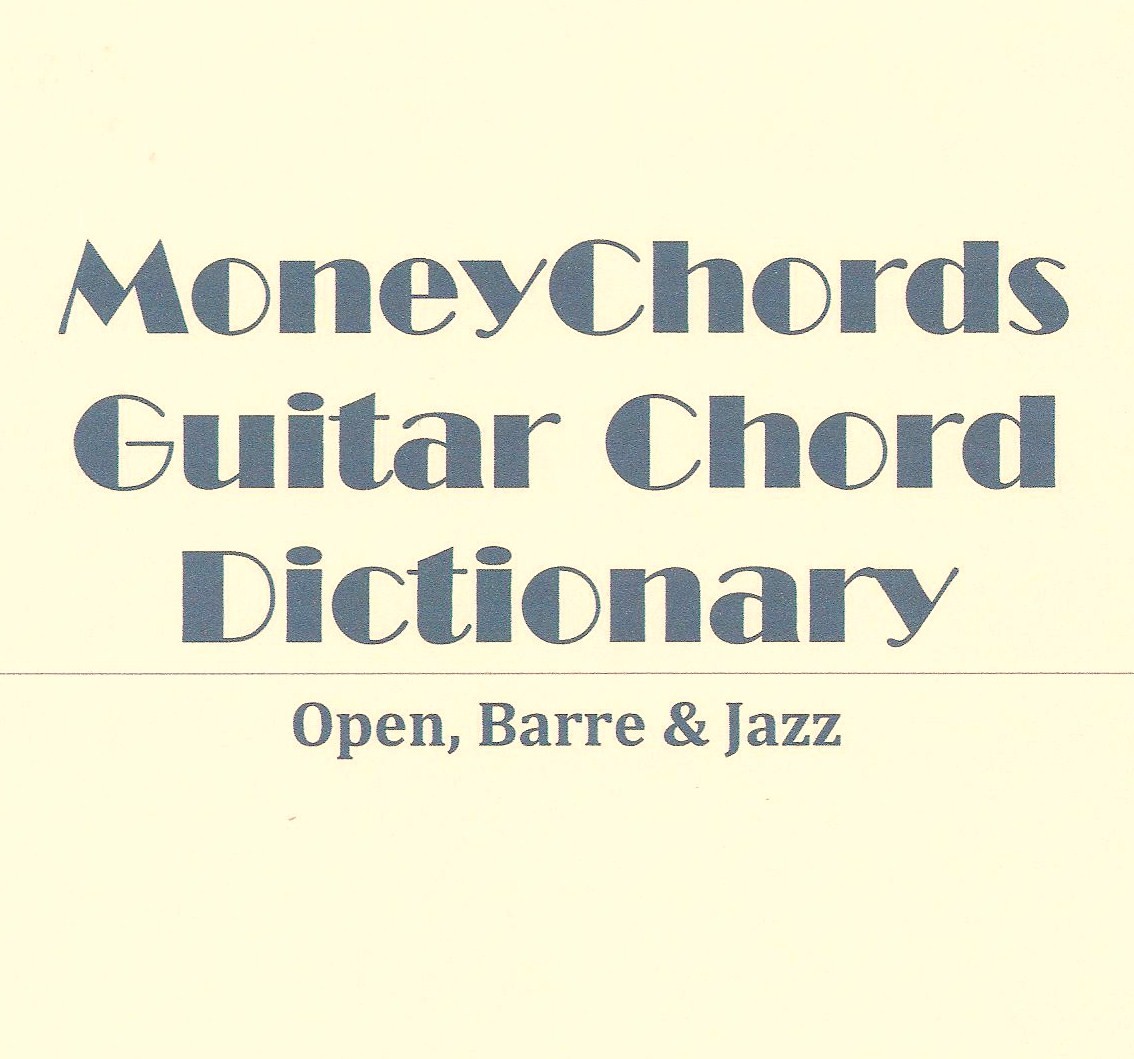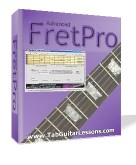|
 The Best Free Guitar Chord Lessons on the Web
The Best Free Guitar Chord Lessons on the Web
A chord is a combination of notes played simultaneously. The name of a chord is determined by its root note, and the relationship between the root note and the chord's other notes. A root note is usually the lowest note in a chord, but this is not always the case. Chords may be strummed or picked through. Traditionally, a chord is defined as three notes played together.
While chords are primarily used for rhythm guitar, basic chord knowledge is important for lead playing as well. The lead parts of many songs often require the use of chords, and in certain styles of playing, chords can make up the lead part entirely. Additionally, many lead patterns revolve around arpeggios, which are chords with their notes played in sequence, rather than together.
Chords are easy to play, but to understand why they sound how they do and why certain chords work better together than others, it is important to understand scales.
Open Major Chords
The most basic chords are the seven major chords, A, B, C, D, E, F and G. Beginners often find G major challenging to play and B major impossible, but this changes with practice and it is good to challenge oneself. The standard tuning of a guitar is designed in part so that these chords can be easily played, as these chords make up the bread and butter of many songs. Fingering positions for the chords are in the diagram below. A 0 indicates an open string, and an X indicates a string which is not played.
A Major B Major C Major D Major E Major F Major G Major
e|---0---| e|---2---| e|---0---| e|---2---| e|---0---| e|---1---| e|---3---|
B|---2---| B|---4---| B|---1---| B|---3---| B|---0---| B|---1---| B|---0---|
G|---2---| G|---4---| G|---0---| G|---2---| G|---1---| G|---2---| G|---0---|
D|---2---| D|---4---| D|---2---| D|---0---| D|---2---| D|---3---| D|---0---|
A|---0---| A|---2---| A|---3---| A|---X---| A|---2---| A|---X---| A|---2---|
E|---X---| E|---X---| E|---X---| E|---X---| E|---0---| E|---X---| E|---3---|
Major chords consist of a root note, a major third above the root, and a perfect fifth above the root. Take for example, a C chord. If we play the C major scale on the guitar, we will notice that all of the notes are also played in the C major chord. In the C major scale, the first, third and fifth notes are C, E, and G. If we were to play a C Major chord and pick through it, the notes are from lowest to higest, C, E, G, C and E. The second two C and E notes are an octive higher than the first. The intervals of this chord, the major third and perfect fifth, are what gives all major chords a bright and happy sound. Consequently, minor chords tend to sound dark and sad.
When you strum a C chord, every string should ring loud and clear, except the low E string. It should be muted by the ring or pinky finger, not struck with the pick, or both. The sound of the fretted notes will not ring out as much as the open strings, but this is normal. If any of the strings do not ring out, check to make sure that none of your fingers are touching any of the strings. If you are accidentally muting any of the strings, arch your hand more and curl your fingers. You should think of your fingers as pressing the string down into the fret, and not pushing the string back against the fretboard. Only through practice will you find the proper way to press down the strings.
Open Minor Chords
Another common chord shape, and the usual contrast to the major chord, is the minor chord. Minor chords are the same as major chords except instead of a major third, there is a minor third. This means that the note is one semitone lower.
A Minor B Minor C Minor D Minor E Minor F Minor G Minor
e|---0---| e|---2---| e|---3---| e|---1---| e|---0---| e|---1---| e|---3---|
B|---1---| B|---3---| B|---4---| B|---3---| B|---0---| B|---1---| B|---3---|
G|---2---| G|---4---| G|---5---| G|---2---| G|---0---| G|---1---| G|---3---|
D|---2---| D|---4---| D|---5---| D|---0---| D|---2---| D|---3---| D|---5---|
A|---0---| A|---2---| A|---3---| A|---X---| A|---2---| A|---3---| A|---5---|
E|---X---| E|---X---| E|---X---| E|---X---| E|---0---| E|---1---| E|---3---|
To explain minor chords, we will use the examples of E major and E minor. In the E major scale, the the third and fifth notes are G and B. If we play the E minor scale, the fifth note is unchanged, but the third note is a semitone lower than the third note in the major scale. When we play an E major chord, we can flatten the third note by lifting the finger that it holding down the fourth string at the first fret, making it an open note.
To a beginner, it may not look like the note on the fourth string is the third note in the scale, because three other notes are played before it. But if we play either an E major or minor scale, and then play it again in the next octive higher, it can be seen that the forth note in the chord is the third note in second octave E scale. The positions of particular notes in a chord are not necessarily consecutive to one another. For example, in the C chord, the third note in the scale is actually on the second string played.
Switching between major and minor chords can be relatively easy, as it involves the change of only one note. But since any particular note can be played in different places on the guitar, it might be difficult to change between certain major and minor chord fingerings. For example changing between an open F major to an F minor can be difficult. This can be solved by playing chords in different ways, such as by using bar chords.
Bar Chords
Bar chords are much more difficult to play than open chords, because they use muscles that aren't generally used for any purpose other than to play bar chords. Before they become easy, these muscles must be trained, and it will take a long time before a new player can use them effectively. Before being able to play a bar chord, you first must be able to bar the fretboard. To do this, you take your index finger and hold it out flat. You then press your whole finger against the strings so that they all press down on the same fret. To illustrate the concept of a bar, compare the difference between a G bar and an open E chord.
Open E G Bar
e|---0---| e|---3---|
B|---0---| B|---3---|
G|---0---| G|---3---|
D|---0---| D|---3---|
A|---0---| A|---3---|
E|---0---| E|---3---|
What barring accomplishes is that it effectively retunes the guitar. A guitar in standard tuning plays a particular type of E chord when all the strings are played open. But, with a bar we increase all the notes by the same amount, so the chord we play with a barred G is the same as with an open E, the only difference is the chord is now in a different key. What this means is that bar chords allow us to play a huge variety of chords. How this can be accomplished can be shown by examining particular bar chord shapes beside open chord shapes.
Six String Bar Chord
A six string bar chord is a chord in which all the strings are being played. It can be compared to E chords, because, since the guitar is tuned to E, it effectively is an open bar chord. Let us examine the form of a major six string bar chord, in this case G, along with the major E chord:
E Major G Major Bar
e|---0---| e|---3---|
B|---0---| B|---3---|
G|---1---| G|---4---|
D|---2---| D|---5---|
A|---2---| A|---5---|
E|---0---| E|---3---|
In both of these chords, the relationship between the individual notes is identical, which is what makes both of these major chords. The difference is the root note, which determines the keys of the respective chords. By looking at the root note, we can see that the difference between all the notes of the E major and G major are three frets. But so long as the relationship remains the same, the major bar chord form can be played on any fret neck. For example, it could be played as an A# or an Bb by putting it in these two positions:
A# Major Bb Major Bar
e|---6---| e|---6---|
B|---6---| B|---6---|
G|---7---| G|---7---|
D|---8---| D|---8---|
A|---8---| A|---8---|
E|---6---| E|---6---|
The utility of bar chords comes from this ability to be played anywhere on the neck. Sliding the chord shape up and down the neck allows you to play many different chords relatively easily, and you can use this technique to pick out simple melodies.
As we saw earlier, the difference between a major and a minor chord is a flattened third. Using a bar chord, the transition between a major and a minor chord is relatively simple. The difference between an E major chord and E minor chord is the lifting of a finger, thereby lowering the note by a semitone. With any bar chord, you can lift a finger and be playing the minor bar chord. The minor bar chord form, shown beside the major bar chord form:
E Major E Minor G Major G Minor
e|---0---| e|---0---| e|---3---| e|---3---|
B|---0---| B|---0---| B|---3---| B|---3---|
G|---1---| G|---0---| G|---4---| G|---3---|
D|---2---| D|---2---| D|---5---| D|---5---|
A|---2---| A|---2---| A|---5---| A|---5---|
E|---0---| E|---0---| E|---3---| E|---3---|
Five String Bar Chords
The same principals hold for five string bar chords, except instead of using the E chord as the root example, the A chord is used. Additionally, it should be emphasised that only five strings are played, which means that the low E string should be muffled.(Courtesy of Wikibooks)
Just as all great writers need to have a good knowledge of words, all great guitarists need to have a good knowledge of chords. The best Guitar Chord Book on the market is Mel Bay's Deluxe Encyclopedia of Guitar Chords available at our MoneyChords Store to the left. This chord dictionary is unique in that it shows only the best voicings and separates Melody, Inside, Rhythm, and Bottom 4 String Chords. Our Guitar Chords pages cover seven topics including over 100 lessons.
|
 |
MoneyChords Guitar Chord Dictionary
by Richard Scott
This is a free 219 page pdf book version of our popular guitar chord reference. [Download your copy here] |
|
|
 |
Advanced FretPro Fretboard, Chords and Scale Trainer
by TabGuitarLessons
Unlike most chord libraries or charts this free software shows the exact location on the fretboard of the position to play the chord and it shows what notes you playing. You'll soon understand why these notes make the chords and start to gain a much better understanding of music.
[Download your copy here] |
|
Check out our 50 page Guitar Chord Dictionary here. It shows the best chord fingerings to over a thousand chords divided between open-string, Barre, and Jazz voicings.
*Download your free MoneyChords CAGED Chord Chart here and your MoneyChords Chart of Major And Minor Chords here.
*Download your free copy of Guide To Chord Formation here. This 23 page pdf book covers the ABCs of chord construction. To view in HTML click here.
*Download your free copy of MoneyChords Guide To Guitar Chord Shapes here. This pdf book contains 19 pages and covers six chord shape types.

About Us |
Chord Progressions |
F.A.Q. |
Freebies |
Guitar Chords |
Guitar Lessons |
Home Page |
Links |
Music News | Site Search |
Songwriting |
Standards |
Store |
Tablature |
WebRings Copyright © 2004 - 2012 MoneyChords.com |